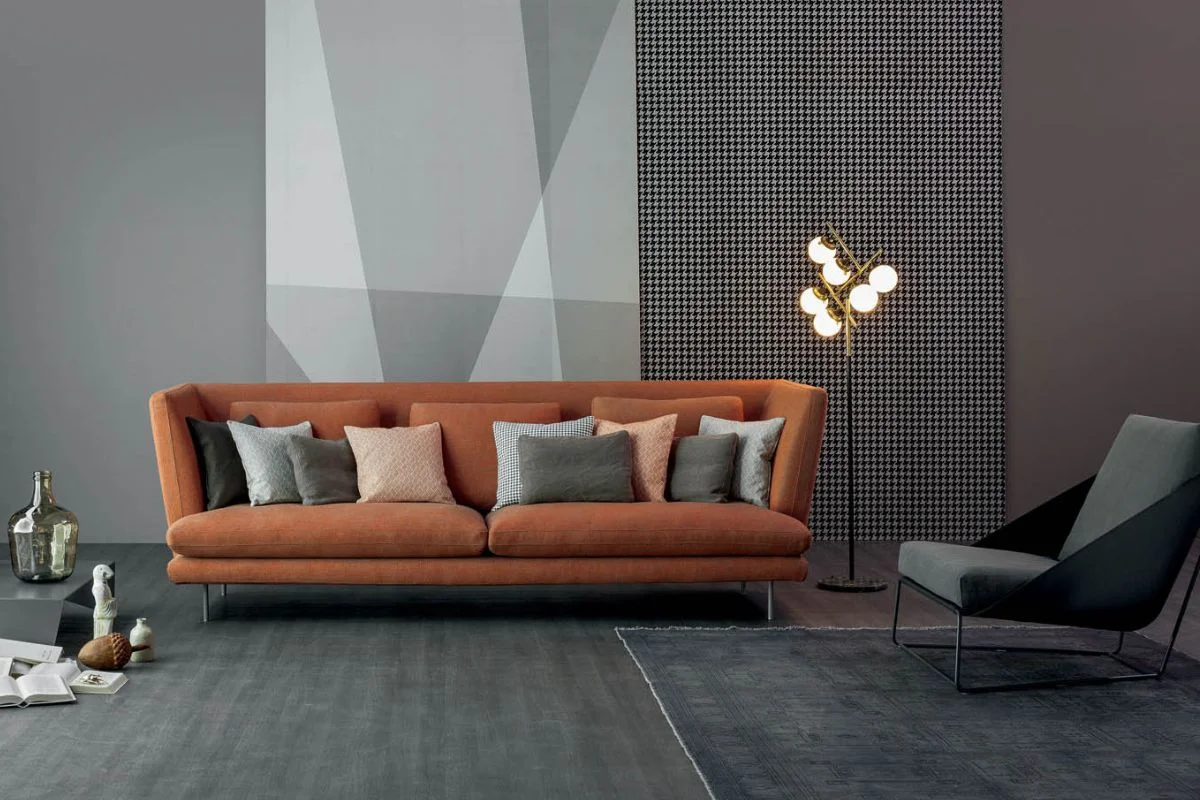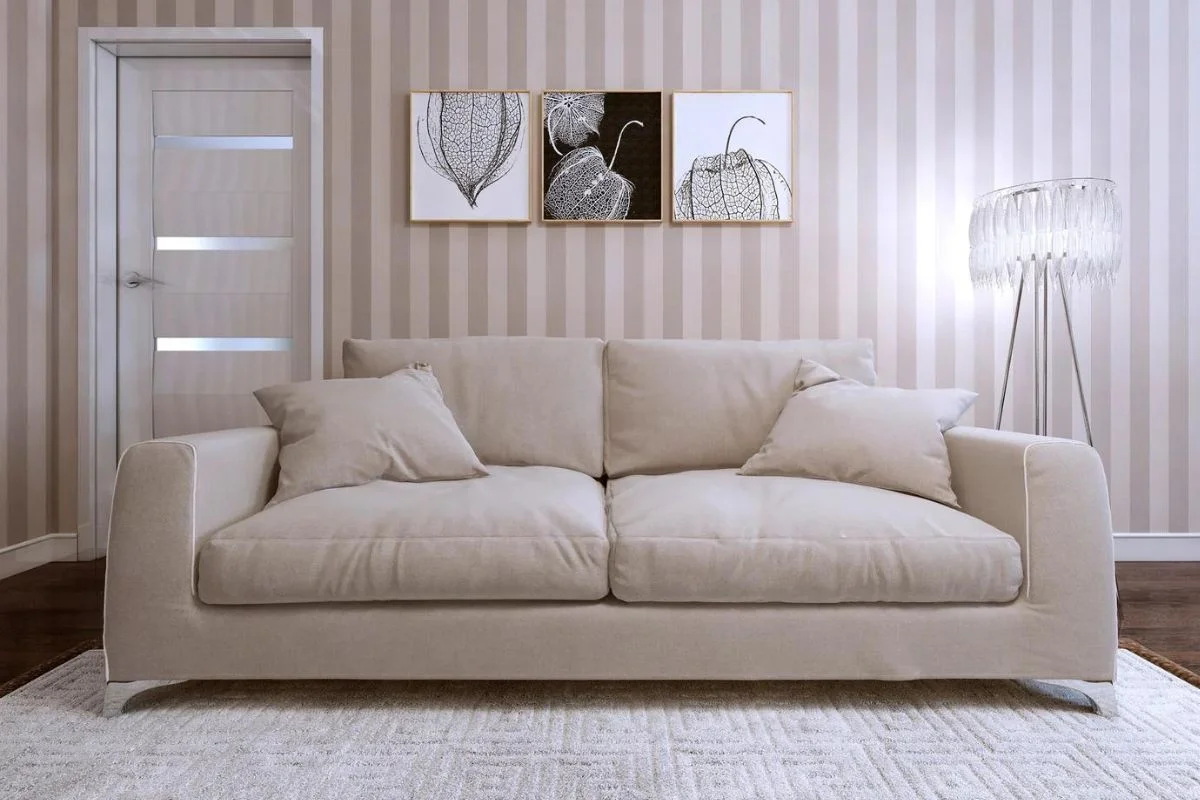Your sofa is the centerpiece of your living space, anchoring the room’s aesthetic and providing comfort for you and your guests. However, over time, the upholstery can become worn, faded, or outdated, diminishing the overall appeal of your space. Fortunately, sofa upholstery offers a versatile solution to breathe new life into your beloved furniture while reflecting your personal style.
In this article, we’ll explore a range of sofa upholstery ideas tailored to suit every style and taste. Whether you prefer classic elegance, modern minimalism, or eclectic charm, there’s a perfect upholstery option to complement your design vision. From luxurious fabrics and bold patterns to understated neutrals and textured finishes, the possibilities are endless when it comes to revitalizing your space with sofa upholstery.
Definition and Basics of Sofa Upholstery
Sofa upholstery refers to the process of covering and padding the frame and cushions of a sofa with fabric or other materials to enhance its comfort, appearance, and durability. Upholstery plays a crucial role in both the aesthetic appeal and functionality of a sofa, making it an essential aspect of interior design.
Upholstery Components: a. Frame: The structural framework of the sofa, typically made of wood or metal. b. Padding: Layers of material such as foam, cotton, or polyester fiberfill used to provide cushioning and support. c. Fabric: The outer covering of the sofa, available in various types, colors, and patterns to suit different styles and preferences. d. Springs or webbing: Provide additional support and resilience to the sofa’s seating area.
Purpose of Upholstery: a. Comfort: Upholstery materials are chosen for their softness, resilience, and ability to provide a comfortable seating experience. b. Aesthetics: The fabric choice, color, and design of upholstery contribute significantly to the overall look and feel of the sofa and the room it occupies. c. Protection: Upholstery helps protect the sofa’s frame and padding from wear and tear, spills, stains, and other damage. d. Insulation: Upholstery materials can provide insulation, helping to regulate temperature and create a cozy atmosphere.
Types of Upholstery Fabrics: a. Natural Fabrics: Examples include cotton, linen, wool, and leather, known for their durability, breathability, and luxurious feel. b. Synthetic Fabrics: Polyester, nylon, acrylic, and microfiber are popular choices for their affordability, easy maintenance, and resistance to stains and fading. c. Blends: Fabrics that combine natural and synthetic fibers offer a balance of comfort, durability, and affordability.
Upholstery Styles: a. Traditional: Characterized by ornate details, plush fabrics, and classic patterns such as floral or damask. b. Modern/Contemporary: Clean lines, minimalistic designs, and neutral colors define this style, often featuring sleek fabrics like leather or microfiber. c. Transitional: A blend of traditional and contemporary elements, offering versatility and timeless appeal.
The Importance of Sofa Upholstery in Interior Design
Sofa upholstery serves as a cornerstone in interior design, influencing the overall ambiance, comfort, and visual appeal of a space. Its significance extends beyond mere functionality, playing a pivotal role in shaping the aesthetic character of a room. Here’s why sofa upholstery holds such importance in interior design:
Aesthetic Enhancement: Upholstered sofas serve as focal points in living rooms, drawing attention with their colors, patterns, and textures. The choice of upholstery fabric can significantly impact the room’s style, whether it’s classic, contemporary, or eclectic. From luxurious leather to vibrant velvet, the upholstery sets the tone for the entire space, adding depth, richness, and personality.
Coordination and Cohesion: Upholstery allows homeowners to coordinate their sofas with other elements of the room, such as curtains, rugs, and wall colors. By selecting complementary or contrasting fabrics, designers can create visual harmony and balance within the space. Upholstered sofas serve as cohesive elements that tie together various design elements, enhancing the overall unity and coherence of the interior.
Comfort and Functionality: Beyond aesthetics, sofa upholstery plays a crucial role in providing comfort and functionality. The choice of padding materials and fabric textures can significantly impact the seating experience, ensuring that the sofa is inviting and comfortable for occupants. Additionally, upholstery helps to protect the sofa’s frame and cushions, prolonging its lifespan and maintaining its structural integrity over time.
Personalization and Expression: Upholstery offers homeowners an opportunity for self-expression and personalization. Whether it’s selecting a bold print that reflects their personality or opting for a luxurious fabric that exudes elegance, the choice of upholstery allows individuals to infuse their unique style into the space. Customization options, such as tufting, piping, and nailhead trim, further enhance the sofa’s individuality and make it a statement piece within the room.
Versatility and Adaptability: Upholstered sofas are versatile furnishings that can adapt to changing design trends and preferences. With removable slipcovers or reupholstering options, homeowners can easily update the look of their sofas to reflect evolving tastes or seasonal decor themes. This flexibility ensures that the sofa remains a timeless investment that can evolve with the design aesthetic of the space over time.
Different Types of Upholstery Fabrics and Materials
When it comes to choosing upholstery fabrics and materials for your sofa, there is a wide range of options available, each with its own unique characteristics, advantages, and considerations. Here are some of the most common types of upholstery fabrics and materials:
Cotton:
- Soft and comfortable.
- Breathable fabric that provides good airflow.
- Available in a variety of colors, patterns, and textures.
- Prone to wrinkling and fading over time.
- Can be blended with other fibers for added durability.
Linen:
- Lightweight and breathable fabric.
- Offers a casual, relaxed look.
- Natural texture and slight wrinkling add character.
- Prone to wrinkling and can be difficult to clean.
- Ideal for low-traffic areas or formal spaces where appearance is more important than durability.
Wool:
- Luxurious and durable fabric.
- Naturally resistant to wrinkles, stains, and fading.
- Provides excellent insulation and warmth.
- Available in a variety of textures and patterns.
- May be more expensive than other upholstery fabrics.
Leather:
- Luxurious and elegant material.
- Durable and long-lasting, with proper care.
- Develops a unique patina over time.
- Resistant to spills and stains, easy to clean.
- Available in a range of finishes, from smooth to distressed.
Polyester:
- Synthetic fabric known for its durability and affordability.
- Resistant to wrinkles, fading, and stains.
- Easy to clean and maintain.
- Available in a wide range of colors and textures.
- May feel less luxurious than natural fabrics.
Microfiber:
- Synthetic fabric made of finely woven fibers.
- Soft and plush texture, similar to suede.
- Resistant to stains, spills, and fading.
- Easy to clean with water and mild detergent.
- Ideal for households with pets or children due to its durability and stain resistance.
Velvet:
- Luxurious and elegant fabric with a soft, plush texture.
- Adds richness and depth to the sofa’s appearance.
- Prone to crushing and marking, requiring regular maintenance.
- Available in a variety of colors and finishes, including matte and crushed velvet.
Silk:
- Luxurious and delicate fabric with a smooth, lustrous finish.
- Adds a touch of sophistication and glamour to the sofa.
- Requires careful handling and maintenance to prevent damage.
- Best suited for formal living rooms or decorative purposes rather than high-traffic areas.
Synthetic Blends:
- Fabrics made from a combination of synthetic fibers, such as polyester, nylon, or acrylic.
- Offer a balance of durability, affordability, and ease of maintenance.
- Available in a wide range of colors, patterns, and textures.
- Can mimic the look and feel of natural fabrics while offering enhanced performance characteristics.
Maintaining Your Sofa Upholstery
Proper maintenance of your sofa upholstery is essential to preserve its appearance, comfort, and longevity. By following a few simple steps and incorporating regular care routines, you can ensure that your sofa remains clean, fresh, and inviting for years to come. Here’s a comprehensive guide to maintaining your sofa upholstery:
Regular Vacuuming:
- Use a soft brush attachment or upholstery nozzle to gently vacuum the surface of your sofa regularly.
- Pay special attention to crevices, seams, and tufted areas where dirt, dust, and debris tend to accumulate.
- Vacuuming helps prevent the buildup of dirt and allergens, keeping your upholstery clean and fresh.
Spot Cleaning:
- Promptly address spills and stains to prevent them from setting into the fabric.
- Blot the affected area with a clean, absorbent cloth or paper towel to absorb excess liquid.
- Avoid rubbing or scrubbing the stain, as this can spread it further or damage the fabric.
- Use a mild detergent diluted in water or a specialized upholstery cleaner to spot clean the stain, following the manufacturer’s instructions.
- Test the cleaning solution on a small, inconspicuous area of the upholstery first to ensure compatibility and avoid discoloration.
Professional Cleaning:
- Consider scheduling professional upholstery cleaning at least once a year, or more frequently for heavily used sofas.
- Professional cleaners have the expertise and equipment to deep clean upholstery fabrics effectively, removing embedded dirt, stains, and odors.
- Choose a reputable upholstery cleaning service that uses safe, eco-friendly cleaning methods and products.
Fluffing and Rotation:
- Fluff and reshape seat and back cushions regularly to maintain their original appearance and provide optimal support.
- Rotate and flip reversible cushions periodically to distribute wear and prolong their lifespan.
- Avoid sitting in the same spot on the sofa continuously to prevent uneven wear and compression of cushions.
Sun Protection:
- Protect your sofa upholstery from direct sunlight, as prolonged exposure can cause fading and deterioration of fabric fibers.
- Use curtains, blinds, or window treatments to block out sunlight during peak hours, especially if your sofa is positioned near windows or skylights.
- Consider applying UV-blocking window film or using protective covers to shield your sofa from harmful UV rays.
Pet and Child Care:
- If you have pets or young children, take additional precautions to protect your sofa upholstery from scratches, stains, and damage.
- Place protective covers or throws over the sofa to minimize contact with pet hair, claws, and spills.
- Train pets to stay off the sofa or provide designated pet-friendly seating alternatives.
- Teach children to use the sofa responsibly and avoid jumping or roughhousing on it to prevent accidents and damage.
Professional Maintenance:
- Periodically inspect your sofa upholstery for signs of wear, tear, or damage, such as loose seams, fraying fabric, or sagging cushions.
- Address any issues promptly by repairing or replacing damaged upholstery components to prevent further deterioration.
- Consult with a professional upholsterer for repairs, reupholstering, or refurbishing services as needed to restore your sofa to its original condition.
Conclusion
Maintaining your sofa upholstery isn’t just about keeping it clean; it’s about preserving its comfort, appearance, and durability for the long haul. By following the maintenance tips outlined in this guide, you can ensure that your sofa remains a focal point of comfort and style in your home for years to come.



